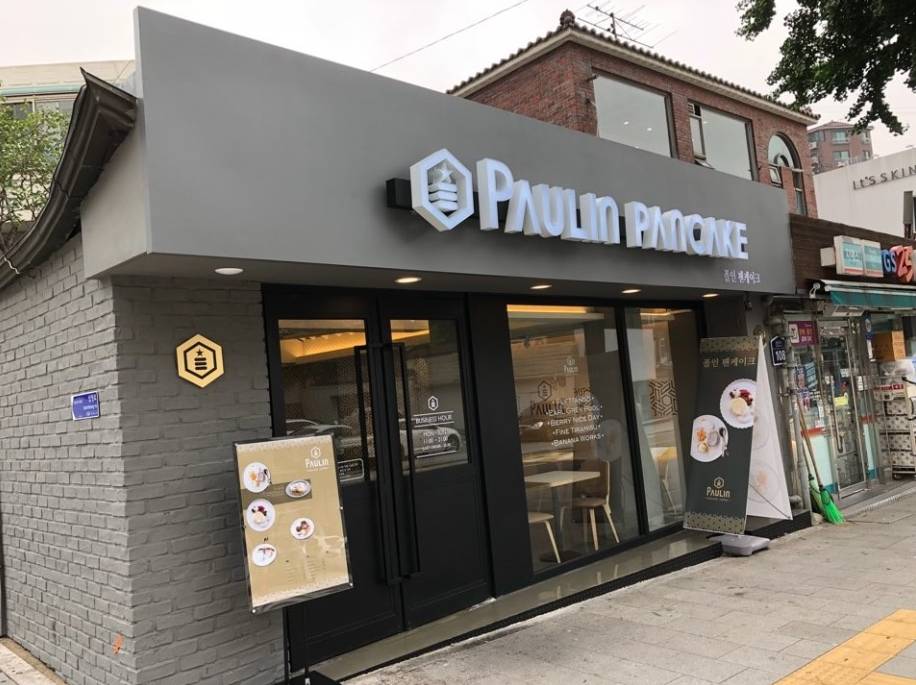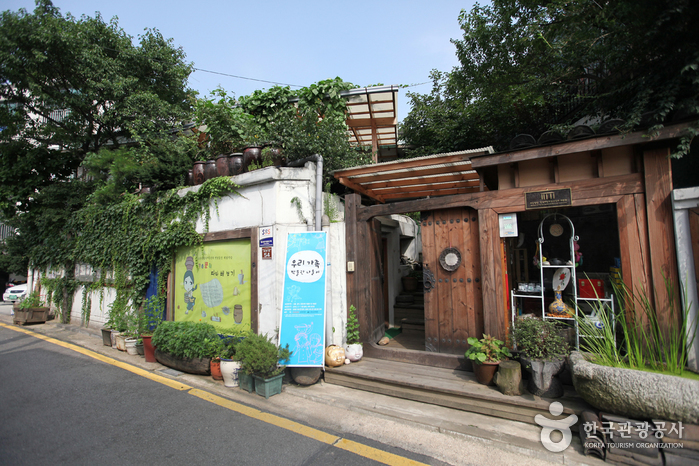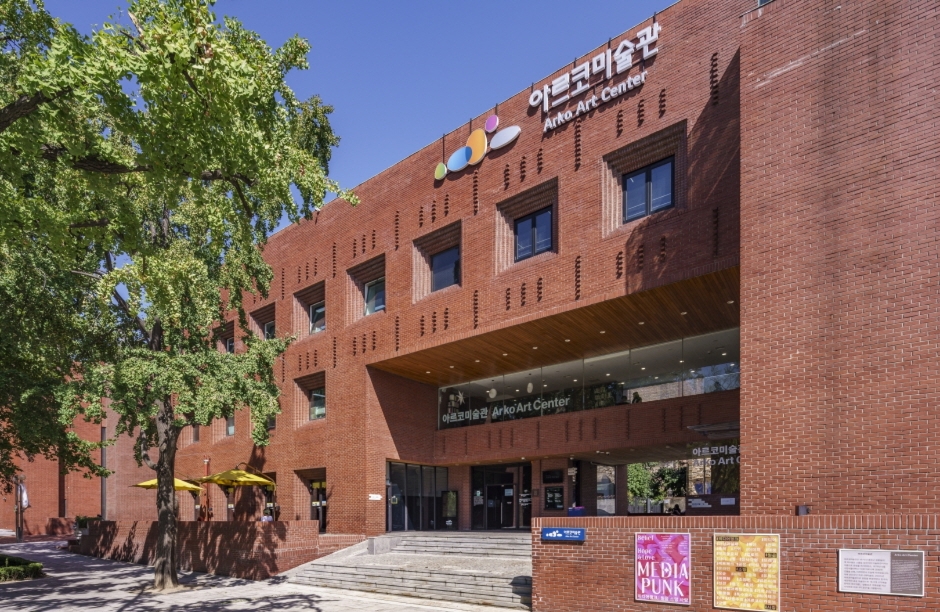PAULIN PANCAKE - Samcheong Branch(폴인팬케이크 삼청)
9.1Km 2021-04-15
108, Samcheong-ro, Jongno-gu, Seoul
+82-2-737-8952
This is a cafe located in Jongno, Seoul. The best menu at this restaurant is souffle pancakes. Souffle pancake is a popular dessert in Korea.
Artbox - Uijeongbu Branch [Tax Refund Shop] (아트박스 의정부)
9.1Km 2024-04-22
5, Haengbok-ro, Uijeongbu-si, Gyeonggi-do
-
Lotte Mart - Cheongnyangni Branch [Tax Refund Shop] (롯데마트 청량리점)
9.1Km 2024-04-22
210, Wangsan-ro, Dongdaemun-gu, Seoul
-
Samcheong-dong Street (삼청동길)
9.1Km 2025-01-22
107 Samcheong-ro, Jongno-gu, Seoul
It is said that Samcheong-dong was named from the story about the three "cheong" (Chinese character meaning clean) of the area, namely the mountain, water, and people. Another theory is that the origin of the region's name came from Samcheongjeon Hall where three tablets called "Taecheong," "Sangcheong," and "Okcheong," were set up based on Taoism. Samcheong-dong Street features a mixture of old scenes of hanok buildings with traditional beauty and modern scenes of galleries and cafés, creating a unique atmosphere. Visitors can feel the abundant cultural mood at every corner of the street through the art galleries, museums, antique shops, and quiet pathways.
Seoul Yangnyeongsi Market (서울 약령시장)
9.1Km 2021-06-09
10, Yangnyeongjungang-ro, Dongdaemun-gu, Seoul
+82-2-969-4793
"Yangnyeongsi," which literally means medicine city district, refers to a central Oriental medicine district formed near major cities where medicinal herbs are collected and produced. Yangneongsi were first established by royal order during the Joseon dynasty for the purpose of effective production, distribution and management of medicinal products and herbs.
Seoul Yangnyeongsi Market history is relatively short, having formed naturally in the mid-1960s by medicinal herb merchants who gathered here seeking to sell their products with the city bus terminal and Cheongnyangni Station as their central base. Originally, these merchants came to Seoul through the old Seongdong Station and Chyeongnyangni Station after the Korean War, seeking to sell medicinal herbs and vegetation products that were cultivated and collected in the Gyeonggi-do and Gwangwon-do regions. This small market that was once open on an empty plot of land was later authorized as an official market establishment. Road and railroad developments between Gangwon-do and Seoul were followed and by the 1970s, the market grew into what is now seen today. The name Seoul Yangnyeongsi Market was given by the Seoul mayor in 1995.
Bukchon Museum (북촌생활사박물관)
9.1Km 2022-08-30
90, Bukchon-ro 5na-gil, Jongno-gu, Seoul
+82-2-736-3957
The Bukchon Museum displays items that have been collected from Bukchon, a historical village that was once home to the nation’s nobility. The museum was founded to observe urban development that took place in the recent decades through collected and preserved veryday household items that were used by Bukchon residents. Visitors are even allowed to touch items on display to better be able to imagine life in Korea before industrialization.
ARKO Art Center (아르코미술관)
9.1Km 2025-06-05
3, Dongsung-gil, Jongno-gu, Seoul
+82-2-760-4850
ARKO Art Center was founded in 1974 as Misulhoegwan in a building of former Deoksu Hospital in Gwanhun-dong, Jongno-gu to offer much-needed exhibition space for artists and arts groups. In 1979, Misulhoegwan moved to its present building, designed by preeminent Korean architect Kim Swoo-geun (1931-1986) and located in Marronnier Park, the former site of Seoul National University. The two neighboring brick buildings accommodating ARKO Art Center and ARKO Arts Theater are the major landmarks of the district of Daehakro.
As more public and private museums and commercial galleries came into the art scene in the 1990s, Misulhoegwan shifted to curating and presenting its own exhibitions. Renamed as Marronnier Art Center in 2002, ARKO Art Center assumed a full-fledged art museum system and played an increasingly prominent role as a public arts organization leading the contemporary art paradigm. When The Korea Culture and Arts Foundation was reborn as Arts Council Korea, Marronnier Art Center became ARKO Art Center named after the abbreviation for Arts Council Korea in 2005.
ARKO Art Center is committed to working as a platform where research, production, exhibitions and the exchange of creative activities grow and develop in connection with one another in addition to having a diversity of programs including thematic exhibitions addressing social agenda and public programs widely promoting various discourses in art.
Uniqlo - Lotte Cheongnyangni Branch [Tax Refund Shop] (유니클로 롯데청량리)
9.1Km 2024-04-18
B1, 214, Wangsan-ro, Dongdaemun-gu, Seoul
-
Golden Dew - Lotte Cheongnyangni Branch [Tax Refund Shop] (골든듀 롯데청량리)
9.1Km 2024-04-19
1F, 214, Wangsan-ro, Dongdaemun-gu, Seoul
-
Lotte Department Store - Store Cheongnyangni Branch [Tax Refund Shop] (롯데백화점 청량리점)
9.1Km 2024-04-23
1F, 214, Wangsan-ro, Dongdaemun-gu, Seoul
-

![Artbox - Uijeongbu Branch [Tax Refund Shop] (아트박스 의정부)](http://tong.visitkorea.or.kr/cms/resource/93/2881293_image2_1.jpg)



![Uniqlo - Lotte Cheongnyangni Branch [Tax Refund Shop] (유니클로 롯데청량리)](http://tong.visitkorea.or.kr/cms/resource/58/2888858_image2_1.jpg)
![Golden Dew - Lotte Cheongnyangni Branch [Tax Refund Shop] (골든듀 롯데청량리)](http://tong.visitkorea.or.kr/cms/resource/51/2889551_image2_1.jpg)
![Lotte Department Store - Store Cheongnyangni Branch [Tax Refund Shop] (롯데백화점 청량리점)](http://tong.visitkorea.or.kr/cms/resource/07/2889907_image2_1.jpg)
 English
English
 한국어
한국어 日本語
日本語 中文(简体)
中文(简体) Deutsch
Deutsch Français
Français Español
Español Русский
Русский